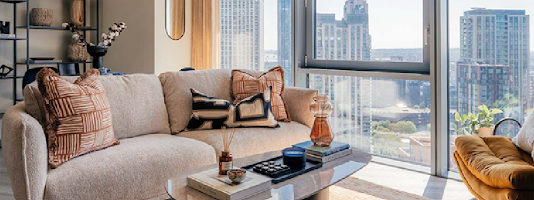Responsive building spaces, on the other hand, are interior spaces that are dynamic and can adapt to the needs of their users. It is crucial to realize that as people’s ways of living, technologies, and needs evolve, interiors must grow more adaptable and versatile. Here are some of the creative strategies by STYLARC that designers and architects are employing to design flexible interiors for homes and businesses.
Transforming Furniture
Modular furniture that incorporates features such as hinges, folding mechanisms, and ease of reconfiguration are essential in flexible environments. These types of furnishings enable occupants to quickly rearrange the layouts. Some examples of such furniture by STYLARC include tables that can be adjusted from a dining table to a coffee table, built-in bookcases and shelves, beds with hidden drawers, and tables that have storage areas concealed beneath the surface that one drops down or pulls up as a workstation. It is the possibility of changing the position, increasing or decreasing the quantity and dimensions of furniture making the rooms more functional.
Movable Partitions and Walls
The use of mobile interior dividers and foldable walls is one of the ways to achieve adaptable spaces. These can enclose and separate or join spaces in order to alter their sizes and functions. Pocket doors, sliding walls, folding screens, and sliding glass walls are some ideas. In the case of hotel ballrooms, they can be closed to become conference rooms, studio apartments can open to accommodate guests for the night, and households can decide to close their open-concept plans.
Multi-Purpose Room Zoning
Instead of a clear division of spaces that characterize traditional interior design, adaptive interiors contain areas that act as one thing at one time and another at another time. With carefully designed lighting, furniture, layout, and partitioning, a single room can provide physical space for multiple activities and requirements of the residents. For instance, a room can be an office and a bedroom and a store can be a café and a bar during different periods.
Efficient Storage Solutions
To switch from one function to another, adaptive spaces have to provide efficient and concealed storage. Closets, cabinets, shelves, and other types of millwork are used to hide items that are used less frequently. Some useful inventions include Murphy beds where you can fold a bed into a wall, coffee tables with storage cubes and ottomans that can hide storage chests. Effective and sufficient organizational tools do not allow for mess but keep important items accessible.
Conclusion
This is because with today’s interior furnishing, customization, storage as well as zonal flexibility, interior space can easily transform to accommodate the different users and their activities or ways of life. It is useful for a space to be able to change as populations rise and fall, technologies develop, and different design philosophies come and go. Adaptive interiors are an intelligent and environmentally conscious approach to planning the utilization of residential and commercial places in the present and in the years to come according to the experts of STYLARC.





No comments:
Post a Comment